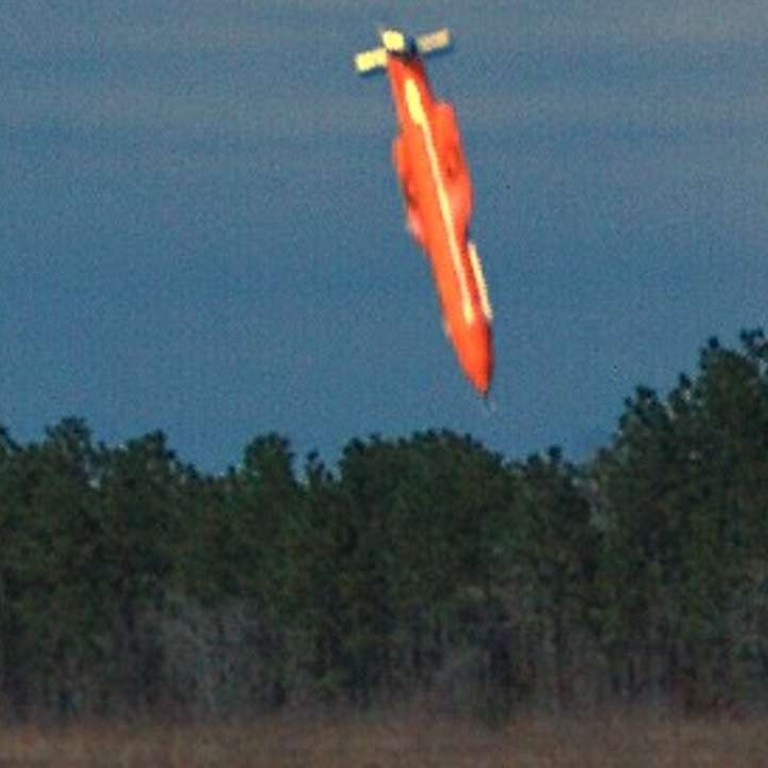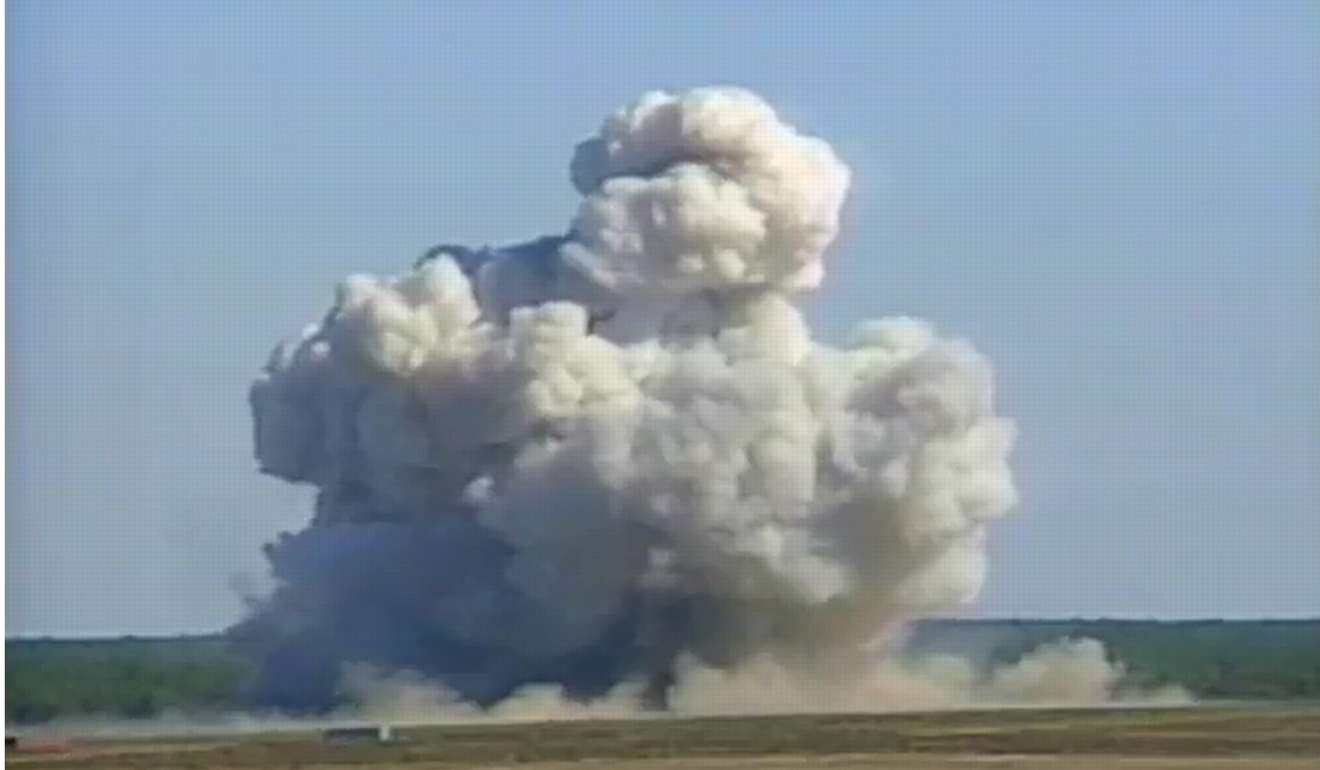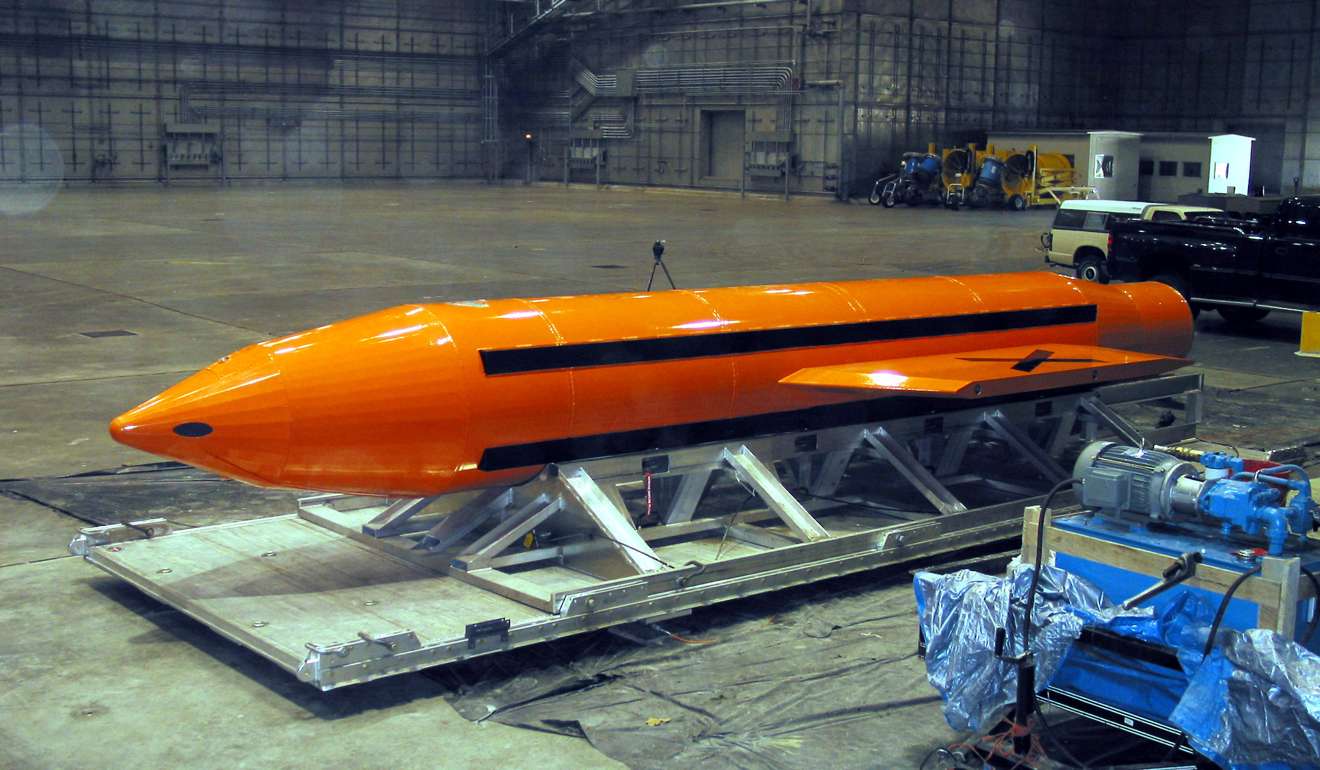
Analysis | Was massive US bomb dropped on Afghanistan the mother of all warnings to North Korea?
When he was running for president, Donald Trump famously vowed to “bomb the s---” out of the Islamic State. Despite a recent series of reversals on other foreign policy issues, he appeared to make good on that promise Thursday.
At 7.30pm local time in Afghanistan, the US military dropped the most powerful non-nuclear bomb in its arsenal on a compound of Islamic State tunnels and caves in Nangarhar Province in Afghanistan, near the Pakistani border.
The GBU-43/B Massive Ordnance Air Blast, also known as the “mother of all bombs,” had never been used in combat before.
Even though President Trump didn’t specifically authorise dropping of the 11-tonne bomb, he may still get a political boost from it.
And even though its use may not have been intended as a message to another troublesome nation, North Korea, it may send one - a reminder that the US is prepared to use some of the most powerful tools at its disposal should the need permit.
After the US military announced the attack on an Islamic State tunnel complex, Trump said he approved of the strike, but he wasn’t trying to send a message to North Korea. “It doesn’t make any difference if it does or not - North Korea is a problem, the problem will be taken care of,” Trump told reporters.
Asked about the use of the MOAB, coming one week after a missile strike in Syria, Trump said that “what I do is I authorise my military ... We have given them total authorisation and that’s what they’re doing and frankly that’s why they’ve been so successful lately.”
I think he’s trying to signal to the North Koreans that he means business, but I don’t think it means anything more than that
Government officials clarified that while Trump has previously been briefed on the potential use of the MOAB, it does not appear Trump got a special briefing on Thursday’s use.
There was no need for one, a White House official said, because Trump had given authority to the military when it came to attacking IS, and the president was aware that this weapon was an option. “He had already in effect greenlighted it,” the official said who was not authorised to speak on the record.
Military officials said the president has given the military wide latitude to fight the war on terrorism as they see fit.
But commanders in Afghanistan already had approval to use the bomb from Trump’s predecessor, Barack Obama, who had changed the rules for bombing in Iraq and Syria last year, said a defence official who was not authorised to speak on the record. He said Thursday was chosen because of the target.

A second senior defence official also cautioned reading more into the use of the MOAB. Sometimes a bomb is just a bomb, said the official who also was not authorised to speak publicly.
One, when he draws a red line, it’s really quite red. And, two, we have the weaponry to cause really, really serious trouble
Thursday’s attack may bolster Trump’s popularity, at least in the short term, analysts said, though it may also heighten fears about the president’s aggressiveness.
Foreign policy analysts have long noted that Trump likes to surround himself with military symbols, whether it’s appearing with troops in uniform or campaigning on battleships and aircraft carriers. “I think Trump is the kind of person who likes to put out visuals,” said Harry Kazianis, director of defence studies at the Centre for the National Interest, a non-partisan foreign policy think-tank in Washington. “It seems like he’s a guy who likes to do a lot of signaling to his adversaries.”
He added, though, that doesn’t mean we should expect him to attack North Korea, whose leader, Kim Jong-un, has increased his war of words with the United States and may be planning a nuclear test this weekend. “I think he’s trying to signal to the North Koreans that he means business, but I don’t think it means anything more than that.”

While Trump once expressed opposition to bombing in Syria, he has long threatened to use force against the Islamic State - most famously in November of 2015 in Fort Dodge, Iowa, when he drew applause for threatening to go after ISIS oil fields and “bomb the s--- out of them.”
As for North Korea, Trump has urged China to help rein in their neighbour’s nuclear threats, or the United States and its allies will do so on their own.
Michael Caputo, who worked for Trump’s presidential campaign last year, said military men and veterans “are happy to see a different kind of chief executive,” and he predicted the public will react positively as well. The strikes have been carefully planned and “very precise,” he said, and “those kinds of actions typically get high levels of support.”
Trump is also issuing warnings to adversaries, Caputo said. “One, when he draws a red line, it’s really quite red,” he said. “And, two, we have the weaponry to cause really, really serious trouble.”

